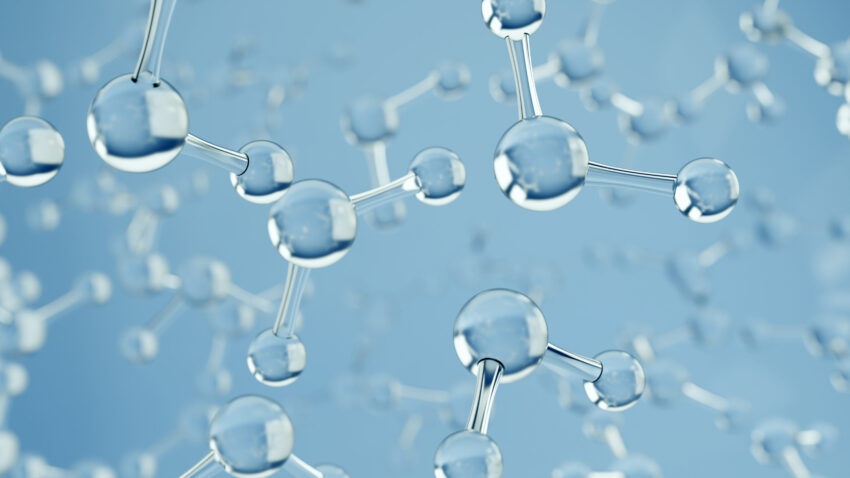For decades, the world of biology and cellular research has been abuzz with the potential of NAD. This coenzyme, which might seem obscure to those outside the realm of biochemistry, plays a pivotal role in several fundamental processes within our bodies. Understanding NAD is crucial to grasping how our cells produce energy, repair DNA, and even age. This article delves into the essence of NAD, its biological significance, and the potential it holds for health and longevity.
The Basics
What is NAD? NAD, or Nicotinamide Adenine Dinucleotide, is a coenzyme found in all living cells. Coenzymes are non-protein molecules that assist enzymes in catalyzing (speeding up) reactions. Think of them as vital teammates that enzymes need to function efficiently.
At its core, NAD is essential for the transfer of electrons from one molecule to another, a process vital to metabolism and energy production in cells. The coenzyme exists in two forms: NAD+ (oxidized) and NADH (reduced). The interconversion between these two forms is at the heart of many biochemical reactions that power the cell.
NAD and Cellular Energy Production
One of the primary roles of NAD is its involvement in cellular respiration, the process by which cells generate energy. Cellular respiration takes place in the mitochondria, often dubbed the “powerhouses” of the cell, where glucose is converted into energy in the form of ATP (adenosine triphosphate). NAD+ picks up electrons from glucose and becomes NADH. This NADH then transfers these electrons further down the energy production line, ultimately producing ATP, the primary energy currency of the cell.
The Role of NAD in DNA Repair and Longevity

Another exciting aspect of NAD is its role in DNA repair and the potential implications this has for aging and longevity. Our DNA is continuously under assault from various sources, including UV radiation, chemicals, and even normal metabolic processes. When DNA damage occurs, it’s crucial for our cells to repair this damage to prevent mutations that can lead to diseases like cancer.
One of the proteins crucial for DNA repair is PARP (Poly ADP Ribose Polymerase). PARP uses NAD+ to carry out its role in fixing broken DNA. When NAD+ levels are high, PARP functions efficiently, leading to more effective DNA repair.
Furthermore, research has shown a connection between NAD+ and sirtuins, a class of proteins associated with longevity. Sirtuins are often called “longevity genes” and are linked with calorie restriction and increased lifespan in several organisms. These proteins also require NAD+ to function. Thus, adequate levels of NAD+ can potentially boost the activity of sirtuins, leading to better cellular health and longevity.
Decline of NAD and its Implications
As we age, the levels of NAD in our body decline. This decline has been linked to a host of age-related ailments, including reduced mitochondrial function, increased DNA damage, and a decline in overall cellular health.
Several factors contribute to this decrease in NAD levels. One is the cumulative DNA damage that requires PARP to consume more and more NAD+ for repair, leaving less available for other cellular processes. Additionally, certain enzymes break down NAD+ in a way that doesn’t contribute to cellular functions.
The decline in NAD+ levels with age has spurred interest in finding ways to boost its levels in the body, either through diet, supplementation, or other means.
NAD’s Connection with Neurodegenerative Diseases
The brain, one of the most energy-demanding organs in the body, relies heavily on efficient cellular function. Given NAD’s vital role in energy production and DNA repair, it’s not surprising that its decline might be implicated in various neurodegenerative conditions. Alzheimer’s disease, Parkinson’s disease, and other cognitive disorders are characterized by neuronal death, and studies have suggested that mitochondrial dysfunction might play a role in this degeneration.
Several studies on animal models have suggested that enhancing NAD+ levels can protect neurons from death, improve mitochondrial function, and even enhance cognition. The protective role of NAD might be two-fold: improving the energy output of brain cells and enhancing DNA repair mechanisms that can counteract the damage seen in neurodegenerative diseases.
The Immune System and NAD
Beyond its role in energy production and DNA repair, NAD has also been shown to influence the immune system. A healthy immune response is critical for fighting off pathogens and for general health, but an overactive or dysregulated immune response can lead to chronic inflammation and a variety of health problems.
NAD has been shown to influence the activity of certain immune cells. For instance, increasing NAD+ levels can reduce inflammation by inhibiting the activity of pro-inflammatory molecules. On the other hand, NAD depletion can compromise the immune system’s ability to fight off infections.
Therefore, maintaining optimal NAD levels might strike the right balance: enhancing the body’s ability to combat pathogens while reducing the risk of chronic inflammation and associated diseases.
NAD and Metabolic Disorders

With the rising prevalence of metabolic disorders like obesity and type 2 diabetes, understanding the underpinnings of metabolic health has become paramount. NAD, with its fundamental role in cellular metabolism, offers insights into how metabolic health can be optimized.
As it turns out, NAD+ levels influence the activity of certain enzymes that play key roles in fat metabolism and glucose regulation. When NAD+ levels are optimal, these enzymes can function efficiently, promoting fat breakdown and improving insulin sensitivity. Conversely, when NAD+ levels decline, it can lead to metabolic dysregulation, accumulation of fat, and reduced insulin sensitivity—hallmarks of metabolic disorders.
Studies on animal models have shown that boosting NAD+ levels can counteract some of the negative metabolic effects associated with high-fat diets and can even improve insulin sensitivity. While more research is needed, especially in humans, there’s potential for NAD+-boosting strategies in the management and prevention of metabolic disorders.
NAD’s Influence on Circadian Rhythms
Circadian rhythms are natural, internal processes that regulate the sleep-wake cycle and repeat on each rotation of the Earth, roughly every 24 hours. These rhythms are governed by the circadian clock, a series of proteins that regulate one another in a feedback loop. Intriguingly, NAD+ levels fluctuate in a circadian manner, rising and falling in sync with the body’s natural rhythms.
Sirtuins, which we mentioned earlier in connection with longevity, also play a role in regulating the circadian clock. Given that sirtuins are dependent on NAD+ to function, there’s a direct link between NAD+ levels and the body’s natural rhythms. Disruption of NAD+ levels might, therefore, have implications for sleep, metabolic health, and overall well-being. While this is a budding area of research, it emphasizes the multifaceted roles of NAD in our biology.
NAD Boosters and Therapeutic Potential
Given the significance of NAD in various cellular functions and its decline with age, there’s been growing interest in compounds that can boost NAD levels in the body. One such compound that has garnered attention is NMN (Nicotinamide Mononucleotide). NMN is a precursor to NAD+, meaning it can be converted into NAD+ within the body. Studies have shown that supplementing with NMN can effectively raise NAD+ levels in cells, potentially offsetting the decline seen with aging.
This has led to speculations and ongoing research on the potential therapeutic applications of NMN and other NAD boosters. The hope is that by maintaining or even boosting NAD+ levels, we might be able to delay the onset of age-related diseases, enhance DNA repair mechanisms, and potentially even extend lifespan.
Conclusion: NAD—The Cornerstone of Cellular Health
The significance of NAD in our cellular processes cannot be understated. From its role in energy production to its potential to extend a healthy lifespan, this coenzyme is at the forefront of many exciting developments in biochemistry and health research. As we continue to unravel the mysteries of NAD and its potential therapeutic applications, it’s clear that this humble molecule holds immense promise for our understanding of health, aging, and disease.
